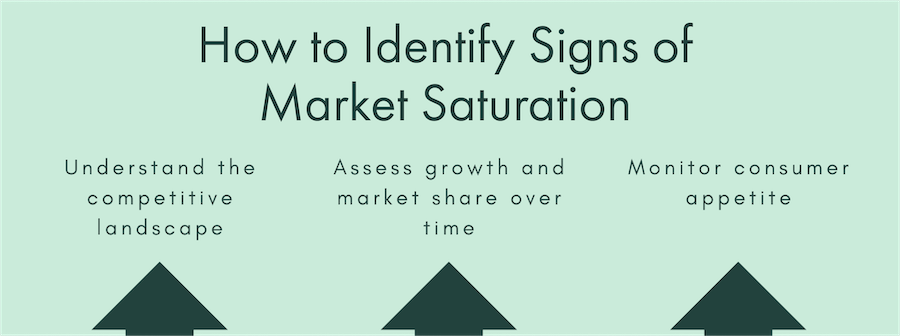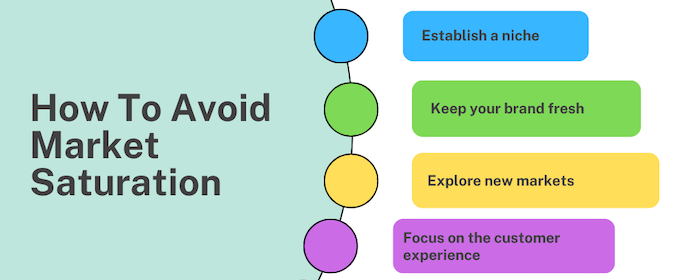Understanding consumer behavior and preferences
Editor’s note: Austin Guanzon is the Tier 1 support manager for Dialpad, an AI-powered customer intelligence platform.
Any industry worth investing in will come with stiff competition, and businesses should always be working to outperform them to capture market share. As more of the available market is sucked up by competing brands, it can become harder and harder to grow your piece of the consumer pie.
When this occurs, it’s likely that the market has become saturated – there simply isn’t any tangible volume of fresh or repeat business to sustain either the number of brands competing in that space or the volume of products your business is promoting.
Although market saturation can occur in any industry and location, digital or physical, market saturation can be seen readily in brick-and-mortar industries, such as the hospitality sector. There are simply too many options for a consumer and not enough footfall to support all competing brands. Market saturation stands as one of the biggest threats to businesses worldwide.
Why is market saturation so dangerous?
Market saturation is a challenging element of running any business, largely as it isn’t always within your control. You simply can’t stop a new business from starting up and operating in your niche or catchment area, and you can’t stop them fighting to outperform you and capture their share of customers.
When brands see something that’s working well, they’re likely to try and get involved, further exacerbating the issue and leading to consumer fatigue and a loss of business for all but a few businesses. If your business offers contact center solution services to businesses in the area, for example, any new competition that secures contracts fundamentally limits your opportunities.
Finally, markets are inherently volatile, and the “winners” in a niche will typically win hard. If your business falls behind the competition, the ramifications of being left behind could be devastating.
How to identify signs of market saturation
The early signals of a market entering saturation can be hard to spot and often misinterpreted as a symptom of other issues within the business. A few lean months or waning interest in a product line could be a sign of marketing saturation, but it could also be due to a myriad of other factors.

For this reason, it’s important to have a strong backing of analytics to benchmark and measure historical performance over a long period of time. Any decisions made from emotion and “soft data” will likely cause more harm than good.
We should always focus on data-driven decision-making as our guiding light, leveraging advanced data collection tools for accurate insights. Fortunately, there are several tools brands can employ to monitor and spot saturation threats.
Understand the competitive landscape
Competing businesses expanding into new territories or pivoting their strategy to target different verticals are the biggest contributors to exhausting a market’s opportunity. We should always be monitoring our biggest competitors as part of a holistic business strategy. Keeping tabs on emerging competitors and changes to the market will help spot any signs of saturation.
For example, if your business is a pioneer in AI assistant solutions for businesses, it is highly likely that new players will appear on a consistent basis. With the understanding that AI is a rapidly maturing industry, it’s logical to expect greater competition as time goes on.
By having a strong grip on the competitive landscape, a business can adjust its strategy and product stack to stay one step ahead of the competition. In many cases, a brand that can’t compete will fall by the wayside, ultimately freeing up additional sections of the market and relieving pressure.
Assess growth and market share over time
With a strong understanding of our competitive landscape through brand tracking and analysis, we can chart our market share relative to the total share available. By measuring business performance against our competitors, we can estimate the total volume of the current market and use modeling to determine where the limit might be.
From this, we can track the business growth against these benchmarks to better understand where the industry sits currently. If select brands are struggling while others excel, that points to the typical push and pull of a competitive vertical, but when many businesses begin to struggle and growth diminishes across the board, it’s a clear sign that the market is changing.
Monitor consumer appetite
Saturation can occur completely independently of the competition. Customers simply stop engaging with a brand, business or market. What may be a burgeoning niche one moment can quickly be a thing of the past as the next viral sensation looms, and businesses that don’t adapt can be quickly left behind.
For example, let’s consider a telecoms business that’s fighting with call center customer retention. It could very well be that the market for such a service is shrinking due to modern VoIP solutions powered by the cloud, and as such, the brand should consider whether there is enough consumer appetite left. These candid assessments have to be done to ensure the long-term survival of a company.
Additionally, the pervasive influence of social media can significantly impact consumer behavior and preferences. For instance, trends and viral content on platforms like Instagram or TikTok can rapidly shift consumer interests, leading to sudden changes in market demand.
Implementing effective social media monitoring, as well as TikTok marketing tips, could be particularly beneficial in leveraging this platform's user base and engagement levels to stay ahead of evolving market trends and maintain consumer interest.
Data-driven tips for capturing market share
With some of the symptoms established, it’s time to fight back and claim your territory. There are several proven methods of capturing market share and safeguarding your brand from the dangers of an oversaturated market.
Establish a niche
Maybe you’re a pioneering fast fashion outlet with a sustainable approach to production and retail, or perhaps you’ve designed one of the best landing page builders for budding entrepreneurs to launch their next website from, powered by a no-code environment. A business that can get to market early in a niche can often cement a lasting place through brand strength and seniority.
We can see brands finding a niche across a host of industries, for example, in cosmetics, an eco-conscious approach to an existing titan industry allows them to carve out a new market that had yet to be tapped.
Keep your brand fresh
We should strive to keep brands relevant and current to the tastes of customers, as this can be one of the greatest ways to stave off saturation and continue sustained growth. Don’t be afraid to take on changes and innovations within your industry and be at the front of the pack to bring them to market.
When looking to update your brand, follow the data as you go and explore what your customers value about your brand. Any changes should be backed by data that showcases where improvements could be made. By continually reinventing yourself, maintaining relevance and staying ahead of the trends, you’ll build consumer appetite and avoid saturation as a result.
Explore new markets
When a market has become tapped or the opportunity for growth is severely limited, sometimes we simply have to expand our offering and look for market share elsewhere. Be ready to ride the wave of innovation and dive into emerging markets, including those that cater to unique demographics.
Focus on gathering and connecting data to find where you can expand into and put the wheels in motion. In many instances, creating new business in adjacent markets can have a reciprocal effect on your core focus, leading to growth. A strategy tailored to each new market's characteristics can further enhance your expansion efforts and maximize your reach.
Focus on the customer experience
The final and most powerful asset to combat saturation is focusing on the customers themselves. Customer loyalty is at an all-time low worldwide, as customers have access to innumerable opportunities to shop and engage with brands whenever and wherever they like. Furthermore, the added competition forces the hand of brands to find any way they can to outperform others and can make the issue worse.
One of the best ways to build long-term loyalty and protect against shrinking markets is to focus on being a consumer-first business and building your products primarily for their benefit.
Additionally, optimizing your business for sustained growth is crucial. This involves refining your strategies, products and services based on data-driven insights and consumer feedback. By embracing agility and adaptability, you can navigate evolving market dynamics and position your business for long-term success.
You want to aim to create a unique and best-in-class customer experience at every step in the journey – from initial engagement and product branding through product purchase and post-sales care and messaging. This will organically grow your retained customer base and protect against any waning market interest.
In addition to the strategies mentioned above, ensuring that your online presence is optimized for user experience and conversion is paramount. Implementing a comprehensive website design checklist can help you identify areas for improvement and maintain a competitive edge in the digital landscape.
From responsive design to intuitive navigation and compelling visuals, every aspect of your website contributes to the overall customer experience and can influence market perception.

Monitoring brand performance
A business that keeps a close eye on its industry, competitors and internal performance can often spot and sidestep any potential saturation of key markets. For the times when it is unavoidable, the ability to pivot strategy and focus on new ideas or markets will be the panacea and will ensure long-term success.
With our global economy and modern retail patterns, brands must work harder to carve out their space in a crowded landscape. Be vigilant and flexible when monitoring performance and be ready to make the hard decisions before it’s too late.
